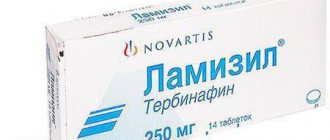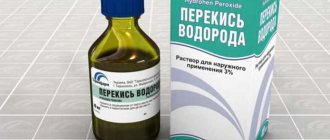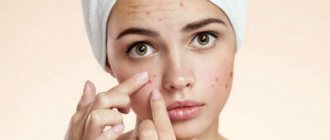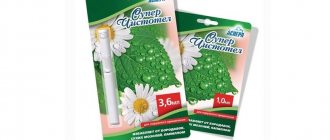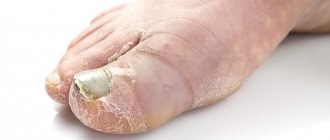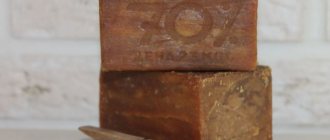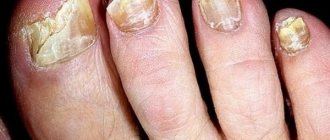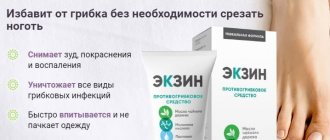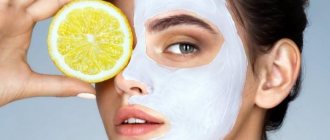Types and signs of fungus
Even a small nuisance can turn into a big problem when the onset of the disease is missed.
A striking example is onychomycosis, a fungal nail disease. The first signs of infection depend on the type of pathogen:
- Dermatophytes - provoke yellow spots, stripes on the sides of the nail plate, causing itching and peeling.
- Yeast fungi cause redness of the skin, scales appear along the edges of the nail, and the plate becomes thinner.
- Mold fungi - settle on the surface of the sore finger, changing its color from pale yellow to black.
Based on the location of the disease, four forms are determined:
- distal (when the plate is affected from the side of the free edge);
- lateral (changes in the sides of the nail);
- proximal (the parasite appears on the posterior fold of the nail);
- total (here the entire plate has been changed).
The disease is divided into three types, with characteristic symptoms:
- the color of the plate changes, stripes and inclusions appear, the thickness of the nail plate remains normal, called “normotrophic”;
- the shine disappears, the color changes, the plate thickens, it is called “hypertrophic”;
- part of the affected nail is rejected - an atrophic type of disease.
Neumyvakin method
Dr. Neumyvakin suggests treating all diseases with peroxide. According to the doctor, this remedy creates a special acidic environment in the body, activating its forces to fight infection. Treatment or therapy of fungus with hydrogen peroxide according to Neumyvakin is carried out in two directions at once; the product must be used both internally and externally.
In the first case, the following dosage regimen is recommended: on the first day, drink one drop of peroxide, on the second day, two drops, and so on. On the tenth day, you should take 10 drops of the drug, then continue therapy for another 3 days, taking the same amount of the drug, and take a break for 5 days. After the break, treatment is continued with one drop of the drug.
Before use, the required amount of antiseptic should be mixed with a tablespoon of water.
External treatment occurs in the following way. Prepare a foot bath by adding 6 tablespoons of baking soda to four liters of water. Soak your feet in this solution for 20 minutes, and then apply a cotton pad generously soaked in peroxide to each nail. You need to keep this lotion for 30-40 minutes. When treating nails on small fingers, for example, on the little finger, it is enough to keep the product on for 20 minutes.
Treatment of nail fungus with peroxide according to Neumyvakin stimulates the healing of cracks in the skin of the periungual ridges, and also adjusts the body to fight fungal diseases.
Prevention of re-infection
In order to prevent the fungus from returning, during treatment it is necessary to pay attention to the disinfection of shoes and socks, otherwise constant self-infection will occur. There are other simple rules for preventing relapses:
Wear shoes according to size and season
It is advisable to give preference to natural materials (leather, suede). It is important to let your shoes dry after use, preferably 24 hours. In the pool, sauna, and gym, individual rubber slippers will protect you from fungal spores. Pedicures and manicures should not be done where there is no confidence in the reliable disinfection of instruments in the oven. Wipe your feet dry after washing; moisture in the spaces between the toes contributes to the spread of infection. Strengthen general immunity - it affects susceptibility to disease.
Treatment of nail fungus with soda according to Neumyvakin
Soda is used to treat onychomycosis due to its ability to create a specific environment on the nail plates in which the pathogen cannot survive. In addition, baking soda can destroy unpleasant odors formed after using vinegar and laundry soap.
- For the bath you need to take 2 liters of warm water and add 2 full teaspoons of soda. The duration of the procedure is 20 minutes, it is recommended to repeat it at least twice a day.
- Recipes that suggest using baking soda with tar soap are much more effective than others. The soap bar needs to be foamed and the resulting foam mixed with baking soda to form a thick paste. The product is applied to nails affected by onychomycosis, fixed with a bandage and left for an hour and a half.
Baking soda is a safer and more popular method of treating nail fungus than peroxide.
What are diseases according to Neumyvakin
The eminent professor is sure that there are no diseases as such - our poor health is a state of the body for which we ourselves are to blame.
It all starts with the food consumed, or rather the habit of many people to drink it during or immediately after eating. Gastric juice, which breaks down foods for better absorption, is a concentrated acidic medium. If you drink a glass of water immediately after eating a meal, the concentration of acid in the stomach decreases, and the food can no longer be fully digested - it stays there longer than expected and simply begins to rot.
The main filter of our body is the liver; it is it that takes on all the main “dirt” and, as a result, becomes clogged. Rotting food is a haven for pathogenic microflora. Bacteria rapidly multiply, mutate, reprogram themselves, transforming into cancerous tumors.
It is important to learn how to control the body, to be able to coexist with the bacteria, viruses, and fungi that surround us, which live not only around, but also inside a person. Lack of the correct balance leads to the development of “diseases,” in particular onychomycosis (nail fungus)
Neumyvakin says the following about the treatment of fungus - all that is needed to combat pathogenic microflora is hydrogen peroxide.
Important!
Benefits of hydrogen peroxide
Neumyvakin carefully studied all the beneficial properties of this composition. Among the main qualities, he identified the following areas:
- taking direct part in the process of protein metabolism, as well as metabolic processes associated with proteins, fats, carbohydrates;
- antioxidant activity;
- the ability to saturate blood fluid with oxygen;
- bringing the acid-base balance of the body into balance;
- normalization of the function of hormonal elements;
- regeneration of tissue structures.
A large number of diseases can be treated with hydrogen peroxide, this is due to its undeniable healing qualities. The key active component of this medicinal raw material, according to Dr. Neumyvakin, is atomic oxygen, which can destroy the entire pathogenic environment, including helminthic infestations, bacteria, viruses, and fungi. As for good microorganisms, the product has a positive effect on them.
Folk remedies for onychomycosis
There are a large number of recipes using peroxide that help cure a fungal infection even in an advanced stage.
The scheme for getting rid of the disease is the same as according to Neumyvakin’s method, only you need to add vinegar (3%) to the hydrogen peroxide preparation (3% solution). The components are taken in a 1:1 ratio.
Pour the treatment solution into 2 liters of hot water (37–40 degrees). Keep your feet in this bath for about 2-3 minutes, after which wipe the skin and nails dry. Treatment should be carried out at least 2 times a day until the fungus begins to disappear.
- Mix equal amounts of peroxide (15 ml) and vinegar (15 ml).
- Soak a cotton pad with a medicinal solution.
- Wrap your toes in plastic or use a toe cap.
- Leave for 3-5 minutes (while the hissing process is underway), then remove the compresses and rinse thoroughly with warm water.
- Lubricate the affected areas of the toenails with Vaseline.
Neumyvakin's technique for treating fungus
Professor Dr. Neumyvakin classifies peroxide as an independent treatment for onycomycosis and believes that this drug is so effective that it can easily cope with any, even the most advanced stage of the disease.
If you treat a disease according to Neumyvakin, you must strictly follow all recommendations:
- Before the treatment procedure, it is good to steam your hands or feet in warm water with soda in a ratio of –20 g/liter.
- After this, take a cotton pad or cloth and cut a small piece out of it to the size of the surface to be treated.
- Soak generously in peroxide and place a compress on the sore finger.
- Leave for an hour. For maximum effect, you can fix the lotion with a fingertip.
- Perform the procedure daily, in advanced cases – twice a day.
Important! Three times a day, drip a solution of hydrogen peroxide under the nail plate.
Contraindications for the use of peroxide
POLL: Do you trust traditional medicine?
Your opinion is very important to us!
It must be remembered that a solution in high concentration can cause burns. Therefore, a 6% solution can be used for baths, and no more than 3% for compresses and lotions.
Long-term use of the drug affects the condition of the skin. People with a dry type of epidermis are not recommended to treat nail fungus with peroxide for a long time, as this can cause skin aging.
The main effect of the solution is to disinfect the affected area. Treatment with this remedy allows you to disinfect the place where the infection is progressing. This effect creates an unfavorable environment for the development of bacteria and inhibits the division of nail fungus cells.
How does peroxide act on fungus?
Peroxide has many useful properties, for example: antiseptic, disinfectant and antibacterial. The drug also neutralizes inflammatory processes and promotes restoration of the infected nail plate. H2O2, upon contact with infected tissue, releases atomic oxygen, which causes oxidative stress in damaged cells. During the redox reaction, the drug acts as a protective bactericidal agent.
The healing properties of peroxide can hardly be overestimated; foam formation when treating fungal-infected areas:
- separates necrotic cells;
- disinfects pathological formations;
- softens the diseased nail plate;
- slows down the infection of healthy tissues close to the fungus;
- facilitates the absorption of antimycotic agents.
When used correctly, hydrogen peroxide will help destroy the “favorable” environment for the development of fungal spores (i.e. localize the source of infection). For fungus, the optimal peroxide concentration for treatment is no more than 3%.
Internal use of peroxide
We have already mentioned that before using a homemade “elixir” (peroxide), it is necessary to prepare the affected surface - steam your feet or hands and remove part of the damaged nail.
Neumyvakin recommends making a soda bath (by the way, the professor also uses soda as a medicine):
- Heat 2 liters of water (to a comfortable temperature);
- Pour a tablespoon of baking soda into it, stir (if desired, you can add the same amount of grated tar soap);
- Dip your feet (hands), hold for 20 minutes;
- Then dry and proceed to remove damaged nail plates.
After completing the preparatory procedures, you can begin treatment with peroxide.
Soak a cotton swab well in peroxide and apply it to the affected surface. You need to secure the top with polyethylene, and then apply a bandage. The compress should remain on the finger for at least 1 hour. If desired or possible, leave the medication to work overnight.
After removing the compress, rinse your feet and wipe dry. Then during the day (4-5 times) drip 3 drops of peroxide onto the cuticle area, nail and under the plate itself (try to get the product onto the entire affected surface). Put on socks and shoes after the medicine is absorbed.
Daily, regular implementation of all procedures will allow you to get rid of onychomycosis in literally 1 month. By the way, the duration of therapy with specialized medications is 2-3 months at the initial stage and from six months with an advanced form of the fungus.
Treatment is carried out according to the following scheme (the medicine is taken three times a day, the course is 10 days):
- 1 day – at one time, dilute 1 drop of 3% peroxide in 50 ml of water, drink before meals (20 minutes);
- Day 2 – 2 drops of 3% peroxide are added to the water;
- Day 3 – you need to add 3 drops and so on.
Every day you increase the amount of peroxide by 1 drop. After 10 days of such treatment, a break is necessary. After resting for 5 days, take the course again, but immediately start with the maximum dosage, that is, 10 drops per 50 ml of water three times a day, course for 10 days.
If unpleasant symptoms occur, reduce the dosage or take a break again.
https://youtube.com/watch?v=OBoscnGdalw
bezgribka.com
The cost of peroxide 3% (40 ml) is from 8 rubles.
The professor warns that it is impossible to exceed the dose (30-40 drops). It is worth abandoning the idea of increasing the amount of solution consumed orally. This will not increase efficiency, it will only harm your health.
The famous scientist gave several tips, following which will make it possible to get rid of the fungus without unpleasant consequences:
Only 3% medicine is suitable for therapy; other concentrations will cause irritation or burns;
- Procedures must be carried out regularly;
- After using peroxide, the limbs are washed with plenty of water. The soaked dirt must be washed off to improve the flow of oxygen to the affected nails, as well as the penetration of active components into the plate;
- Breaks in treatment are required if it is carried out internally. Usually three days are enough, then therapy is resumed;
- Using the product externally, slight discomfort and redness are possible, but it quickly disappears;
- It is also better for family members to use hydrogen peroxide as a preventative measure.
You also need to take into account the following rules:
- During treatment, you must use only your own things (manicure accessories, towel, etc.);
- It is advisable not to touch the infected area to prevent the infection from spreading further;
- It is imperative to disinfect your shoes by treating them with peroxide;
- The affected plate must not be varnished;
- The procedures are repeated until the disease subsides. The effect is noticeable after several uses; treatment of the fungus with hydrogen peroxide cannot be stopped;
- If onychomycosis affects your hands, contact with various detergents is contraindicated. Wear gloves before washing dishes, floors, etc.
Important!
Having overcome the disease once, there is a chance of becoming infected with it again, so do not forget about the rules of protection and prevention. It is forbidden to wear someone else's shoes and use hygiene products; you must have rubber slippers in swimming pools and saunas; any skin lesions must be immediately treated with an antiseptic.
How will peroxide help in the fight against fungus?
Hydrogen peroxide is one of the folk remedies for treating nail fungus
The effectiveness of treating nail fungus with hydrogen peroxide is due to the antiseptic properties of this drug. First of all, peroxide prevents the further development of pathogenic microflora, protecting the surrounding tissues and neighboring nails. Another positive property of peroxide is the creation of an acidic environment in which most fungi cannot reproduce.
Yeast and mold fungi actively reproduce in a non-acidic environment. At the same time, they feed on the keratin contained in the nail plates, thereby contributing to the destruction of the nails. The use of hydrogen peroxide for nail fungus increases tissue acidity. As a result, the mycelium of the fungus gradually weakens, changes occur in the cells, as a result of which the release of new spores becomes impossible, and the colony of pathogenic fungi gradually dies.
In addition, peroxide softens the nail plates, facilitating easy separation of the damaged layer. This helps you care for your nails more effectively by cutting off large areas of the affected plate for a speedy recovery.
Despite a lot of positive properties, peroxide is not a panacea. The use of hydrogen peroxide for nail fungus as an independent remedy is justified only in the initial stages of the disease.
In advanced cases, nail fungus should be treated with hydrogen peroxide together with the use of special medications from the pharmacy. In this case, the liquid should be used as an antiseptic, but not a fungicidal agent.
What is toenail fungus
The medical name of the disease is onychomycosis. It is caused by dermatophyte fungi of the genus Trichophyton, less commonly Epidermophyton and pathogens of microsporia (ringworm). Fungal infection of the nail plate is not a cosmetic defect, it is a serious disease that has its own code according to the international classifier of diseases ICD-10. Onychomycosis can involve some areas of the nail plate or the entire nail (then doctors call it total). In Russia, a classification has been adopted based on the appearance of the nail (photos can be found online):
- normotrophic – stripes, spots while maintaining the normal shape and thickness of the nail;
- hypertrophic - the plate grows in breadth, changes color, loses its shine, thickens, and begins to crumble;
- onycholytic - the affected part dies and is torn away from the bed.
Side effects and contraindications
Hydrogen peroxide is not a strong allergen, but there are still people with hypersensitivity to this drug. For them, treatment with peroxide is contraindicated. You can check whether a person is in this “risk group” by preparing a bath and placing your foot in it for 10 minutes. Symptoms characteristic of allergies usually manifest themselves no later than 24 hours later.
The prohibition for using peroxide internally according to the Neumyvakin method is postoperative conditions, as well as damage to the mucous membranes of the larynx, stomach, and oral cavity.
If the product is used externally incorrectly, a person risks experiencing unpleasant symptoms. If the burning sensation is insignificant, you can endure it - such sensations indicate that the drug is actively working. If the burning sensation is very strong, the procedure should be stopped.
Other negative side effects of the drug may include:
- redness on the skin;
- dizziness;
- nausea;
- sleep disorders.
Contact of peroxide on the skin can be dangerous. If the skin is tender, even a burn is possible. This requires caution when using the drug - it should be applied only to the nail plate, without touching the adjacent skin.
From time to time, the body needs to be given a break from such procedures, since prolonged use of the drug can change the structure of the skin and nail plate and disrupt natural regeneration processes.
Hydrogen peroxide and nail fungus from recipes to reviews after treatment
In this article we will figure out whether hydrogen peroxide really helps in treating nail fungus. We'll tell you which recipes with peroxide actually treat fungus, how they work and how to use them correctly.
Rationale for the method
Hydrogen peroxide (peroxide) is an antiseptic with a pronounced softening effect. The foam formed when treating the affected areas separates dead cells and pathological formations, softens the nail plate and facilitates the absorption of antifungal agents.
When treating onychomycosis, peroxide slows down the infection of healthy tissues, but even a high concentration of peroxide does not kill the fungus and its spores. Therefore, the method is effective as an adjuvant in complex treatment.
To treat nails, it is optimal to use a 3% hydrogen peroxide solution.
When to use the method
- As a preparatory stage before applying external antifungal agents;
- In the initial stages of onychomycosis.
Advantages and disadvantages
Strengths:
- cheap and accessible;
- ease of use;
- safe for health.
Weak sides:
- ineffective as an independent antimycotic agent;
- long-term therapy.
Professor Neumyvakin
According to Professor I.P. Neumyvakin, hydrogen peroxide kills any pathogenic microflora and treats the most serious diseases.
For onychomycosis, he recommends steaming your feet in a soda bath (more about baths and other recipes with soda...), and then applying a cotton swab soaked in peroxide to the nail and leaving it for 15-30 minutes. The doctor believes that this method is suitable for treating nail fungus even at its most advanced stage.
Fragment of the professor’s lecture (from 3:00 he talks about fungi):
Video recipe using the Neumyvakin method:
Recipes and their application
Recipes for preparing nails for antifungal agents
The cost of peroxide 3% (40 ml) is from 8 rubles.
Nail treatment with peroxide
Wipe the nail plates with a cotton pad soaked in peroxide (or drop 2-3 drops into the nail bed). In advanced cases, you can fix the tampon with a plaster, bandage or put on a fingertip and leave it for 15-30 minutes.
Peroxide bath
40-50 ml of product per 1 liter of water (about 45 degrees). The duration of the bath is 15-20 minutes.
Recipes against mycosis in the early stages
Bath with ammonia
- water (40-50 degrees) 1 l.
- ammonia alcohol 40 ml.
- hydrogen peroxide 40 ml.
Ammonia provides an alkaline environment, unfavorable for the development of fungus, and also has antiseptic characteristics. The product is easy to buy at any pharmacy, the cost is about 10-15 rubles. 40 ml
Compress with vinegar
In equal proportions:
- vinegar (table vinegar 9% or apple cider vinegar).
- peroxide 3%.
Apply a moistened cotton swab to the nail and hold until the characteristic hissing stops. Repeat twice a day for a month. Hydrogen peroxide will enhance the effect of vinegar, which creates a destructive acidic environment for fungal infections.
More effective recipes with vinegar.
Reviews from doctors
Pavel T., dermatologist: “For expectant mothers who need to cure nail fungus, but are prohibited from using various medications, I advise doing foot baths with peroxide. A prerequisite is that the water should be warm, not hot, in order to avoid a rush of blood to the pelvis and the associated risk of premature contractions.”
Galina E., doctor: “When patients ask me whether it is possible to use hydrogen peroxide to treat nail fungus, I, as a rule, do not object, however, I warn you: if the disease is in an advanced form, it will not be possible to be cured without strong medications. But by combining both, you can quickly achieve positive results.”
Yulia S., doctor: “In my practice there are many examples when patients got rid of nail fungus thanks to compresses and baths with hydrogen peroxide. But this is only at the very beginning of infection. When the disease has already covered several fingers, the infection is already difficult to cope with, which means you cannot refuse pharmaceutical drugs.”
